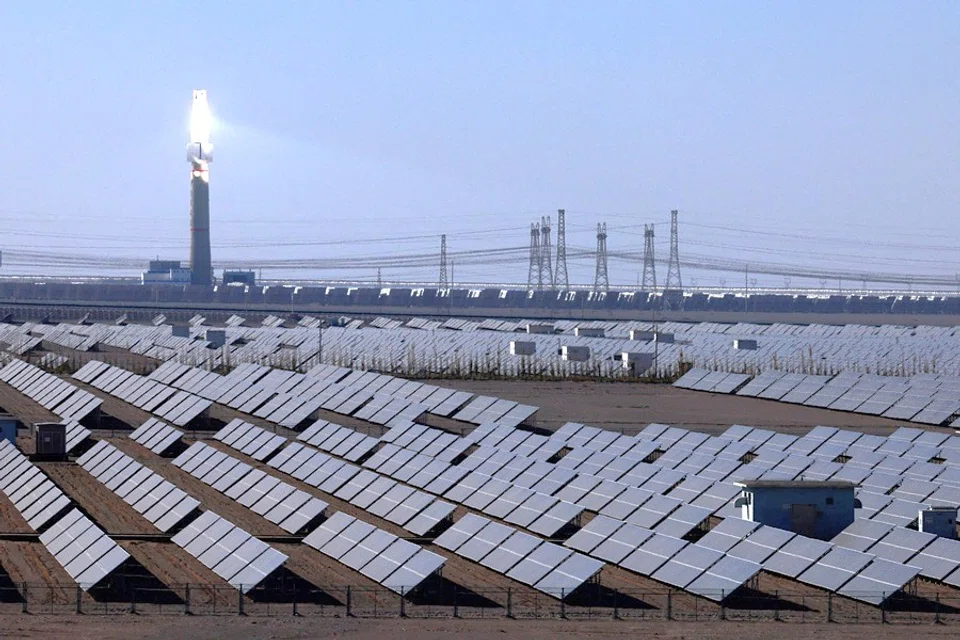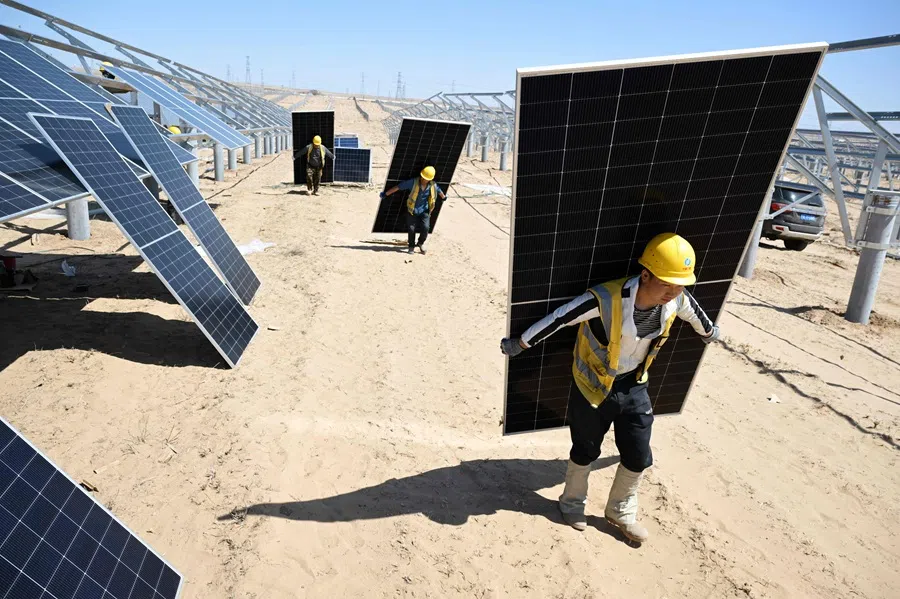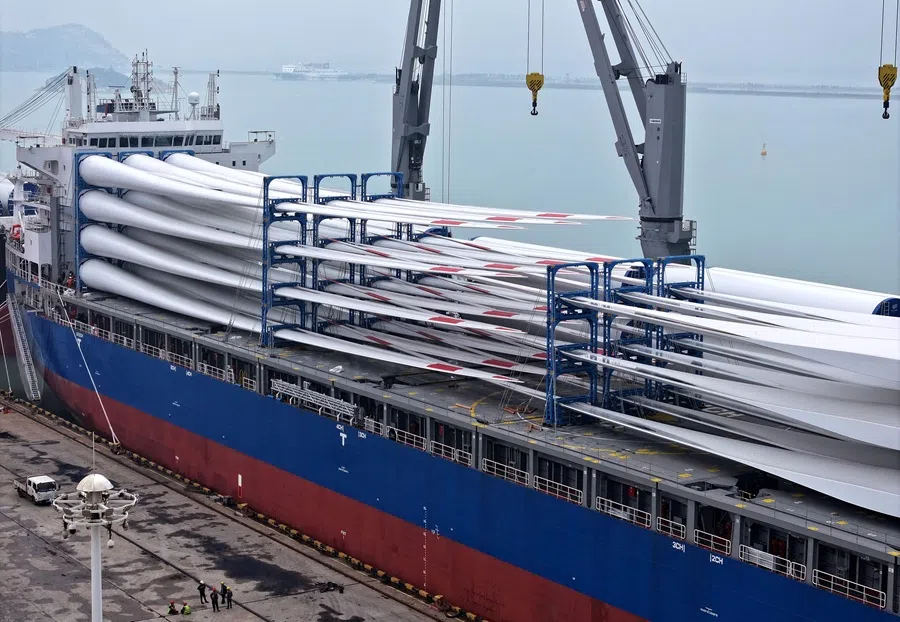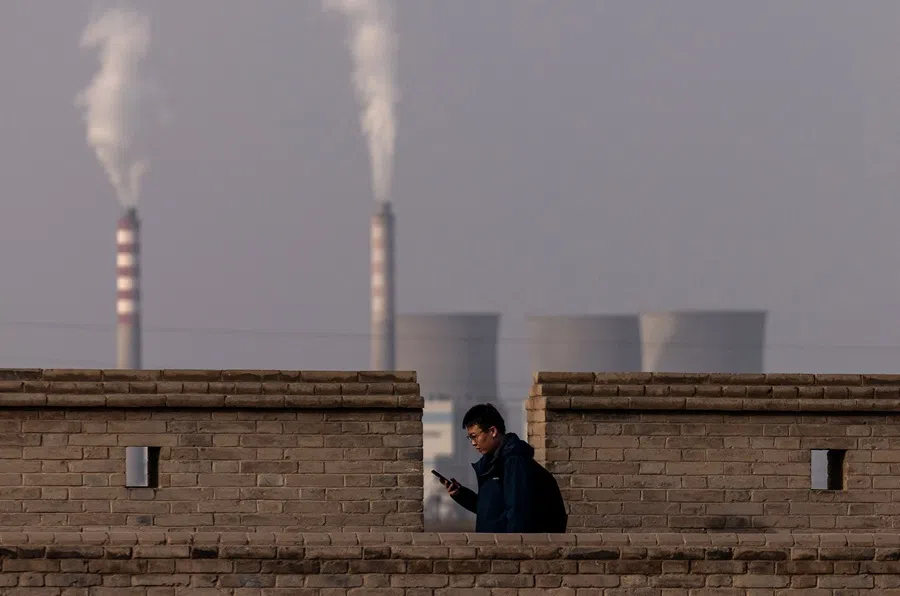Green fortress: How China is forging the energy security of the future against the US
From Gobi desert solar farms to coastal nuclear reactors, China is quietly building the energy grid of the future. Self-sufficient, AI-ready and strategically insulated, it is turning climate goals into a “green fortress” the US struggles to match, says academic Hao Nan.

China is executing a long-term plan that fuses its global climate commitments with its national objective of full energy self-sufficiency. Aligning with the “dual carbon” goals of peaking emissions by 2030 and achieving carbon neutrality by 2060, China’s own planning and Goldman Sachs’ estimate find that the country is expected to see the dominance of renewable energy in its energy structure by 2030, and likely to become energy self-sufficient by 2060. These are not parallel policies, but one integrated strategy where the green transition fuels energy independence.
100% autonomy: a goal once considered impossible
Multiple technical assessments suggested that China could in principle peak its carbon emissions around the mid-2020s, and or more specifically in 2024 or 2025 if efficiency gains and the current boom in renewables and nuclear are fully leveraged.
But the 2021 power shortages, followed by the shock of Russia’s invasion of Ukraine and instability in the Middle East, have pushed energy self-sufficiency and price stability to the top of Beijing’s agenda. Because coal is the one fuel in which China is more than 90% self-reliant, it has been the instrument of choice for shoring up energy security in the short term, driving a wave of new coal-fired power approvals and construction that reached a ten-year high in 2024 even as wind and solar race ahead.
For long-term energy security, China is cleaning its energy mix while fortifying its energy security through simultaneous investments in nuclear, hydropower, renewables and domestic fossil fuel development. With self-sufficiency already surpassing 85% by the end of 2024, it is moving toward the once-unthinkable goal of 100% autonomy. This shift will reshape its national security posture, intensify its strategic rivalry with the US, advance its AI ambitions, and bolster its leadership in the Global South and global clean energy governance.
Every terawatt-hour generated by a Gobi Desert solar farm or a coastal nuclear reactor is one less dependent on foreign tankers navigating contested sea lanes.
An initiative stemming from vulnerability
Beijing’s strategy lies in uniting global and national imperatives. Internationally, the “3060” goal of reaching peak carbon emissions by 2030 and carbon neutrality by 2060 offers moral authority and global influence. Domestically, they function as a policy directive driving industrial reform and innovation. At the same time, China’s energy security imperative stems from vulnerability — deep reliance on imported oil and gas, and the chokepoints along the shipping route have long been its Achilles’ heel.

Massive investments in wind, solar, hydro, and nuclear — all domestic energy sources — allow China to replace fossil fuel imports from volatile regions. Every terawatt-hour generated by a Gobi Desert solar farm or a coastal nuclear reactor is one less dependent on foreign tankers navigating contested sea lanes. In effect, climate goals become a vehicle for achieving strategic invulnerability.
From imitator to innovator
Evidence of this integration is visible across China’s energy landscape. In nuclear energy, China has evolved from imitator to innovator. Its Hualong One reactor is now in serial production, with 26 units approved or under construction. The Shidaowan plant — the world’s first fourth-generation nuclear reactor — demonstrates global leadership. China is also exploring thorium-based molten salt reactors, with the first-ever thorium-to-uranium nuclear fuel conversion achieved, which could unlock a virtually limitless and indigenous fuel cycle, leveraging China’s vast thorium reserves.
Hydropower continues to be a key pillar. The colossal Yarlung Zangbo mega-dam project, capable of generating nearly 300 billion kilowatt-hours (kWh) of clean, renewable and zero-carbon electricity annually — enough to meet the yearly electricity needs of over 300 million people, is emblematic of China’s willingness to undertake ambitious engineering for long-term gain.
Symbolically, wind and solar capacity have surpassed coal since 2023 — a seismic shift in the energy landscape.
But renewables have seen the most dramatic growth. China leads the world in installed wind, solar and other renewable energy capacity, amounting to 2.198 billion kilowatts by September 2025, accounting for about 59.1% of China’s total installed power capacity. Symbolically, wind and solar capacity have surpassed coal since 2023 — a seismic shift in the energy landscape.
This surge was driven by dramatic cost reductions achieved through scale. Chinese solar panels have become so cheap that they democratise clean energy globally — but their greatest beneficiary is China itself.

Meanwhile, a transitional strategy for fossil fuels continues. The seven-year strategic push for domestic oil and gas exploration — and development from 2019 through 2025 — has delivered by 2024 six consecutive years of rising crude output and eight years of steady natural gas growth. This does not contradict the green agenda — it manages dependency decline, buying time for renewables and nuclear to scale up.
It is building energy security not with warships, but with wind farms and nuclear reactors.
Becoming ‘neither sensitive, nor fragile’
At the core of this transformation is China’s ultra-high-voltage (UHV) transmission grid. A globally unmatched achievement, UHV enables long-distance power transmission with minimal loss. It connects energy-rich western regions to the industrialised east, enabling a truly national, optimised energy market.
The net effect is a dramatic upgrade in China’s energy security. Previously “sensitive but not fragile”, China’s energy system was exposed to global price swings and geopolitical crises. As self-sufficiency nears 100%, it becomes “neither sensitive, nor fragile”. Economic and military capabilities will be increasingly insulated from foreign energy coercion.
This strategic insulation has profound foreign policy implications. Freed from dependence on oil imports and vulnerable sea lanes, China can engage in maritime disputes — from the South China Sea to the Red Sea — with one less vulnerability. It is building energy security not with warships, but with wind farms and nuclear reactors.

This recalibration directly shifts the dynamics of Sino-American strategic competition. Historically, the US has wielded influence over global oil markets and shipping lanes. A China requiring minimal fossil imports neutralises this advantage. The contest now moves from fossil fuel control to dominance in clean energy technology.
The new battlegrounds include supply chains for critical minerals like lithium and cobalt, intellectual property for advanced batteries and green hydrogen, and the standards that will govern the global clean energy web. Here, China already enjoys formidable advantages — controlling 80–95% of solar panel supply chains and over 60% of wind turbine production.
It offers a compelling alternative: a Chinese model of industrialisation and energy security that leapfrogs fossil dependence.
China’s edge
Concerns in the US about energy constraints on AI development only highlight China’s advantage. US data centres face years-long delays connecting to overstretched grids, forcing firms like OpenAI and xAI to build private gas plants.
China, by contrast, has proactively addressed this challenge through its “east data, west computing” initiative, situating energy-hungry data centres in the renewables-rich western regions. Its robust grid provides a stable, scalable foundation for AI expansion — an “energy moat” that US competitors currently lack.

Beyond the rivalry with Washington, Beijing’s energy strategy underpins its vision for global leadership, particularly in the Global South. It offers a compelling alternative: a Chinese model of industrialisation and energy security that leapfrogs fossil dependence. The Chinese path to modernisation bypasses the costly, carbon-heavy route and moves directly to distributed, renewables-based growth.
Through the Belt and Road Initiative and platforms like the Global Energy Interconnection Development and Cooperation Organization, China is exporting more than hardware — it is exporting a green development model. Offering financing, technology, and infrastructure, it builds a “green South-South cooperation” axis that fosters alignment with China’s strategic and technological ecosystem.
Yet this ambitious path comes with challenges. A grid dominated by intermittent renewables poses enormous storage and stability issues. While China leads in battery production, grid-scale storage on the required scale remains daunting.
Moreover, as it reduces dependence on fossil fuels, it creates a new dependence on critical minerals essential for renewable technologies. Securing resilient supply chains for lithium, cobalt, and rare earths is the next strategic frontier. Meanwhile, US-led efforts to “de-risk” by building non-Chinese supply chains are fragmenting the global tech landscape.
The rise of a new axis of power?
Still, China’s trajectory is unmistakable. By aligning its climate goals with its energy security needs, it has transformed a potential liability into a strategic opportunity. If, over the coming decades, it succeeds in achieving near-total self-sufficiency through clean technology, the implications will eclipse those of any single geopolitical event.
It would demonstrate that a major power can simultaneously achieve strong economic growth, deep decarbonisation and strategic autonomy. This marks the rise of a new axis of power — shifting from the oil geopolitics of the 20th century to a 21st-century “green power” order defined by clean energy mastery, supply chain control and systems integration.
In doing so, China is not only safeguarding its own future but offering the world a sweeping blueprint for what it calls “ecological civilisation” — a vision that will inspire some and deeply unsettle others.





